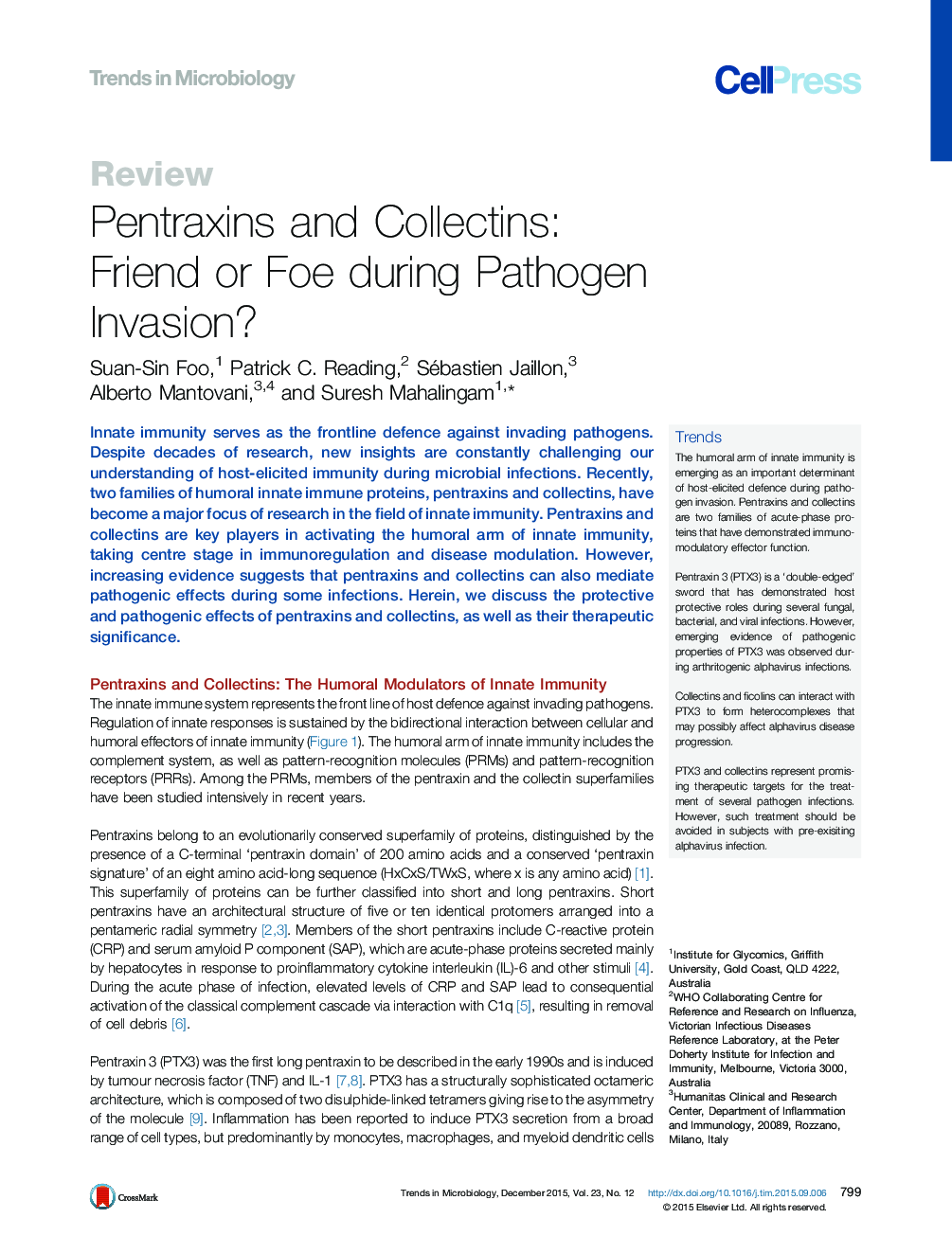| Article ID | Journal | Published Year | Pages | File Type |
|---|---|---|---|---|
| 3421756 | Trends in Microbiology | 2015 | 13 Pages |
Innate immunity serves as the frontline defence against invading pathogens. Despite decades of research, new insights are constantly challenging our understanding of host-elicited immunity during microbial infections. Recently, two families of humoral innate immune proteins, pentraxins and collectins, have become a major focus of research in the field of innate immunity. Pentraxins and collectins are key players in activating the humoral arm of innate immunity, taking centre stage in immunoregulation and disease modulation. However, increasing evidence suggests that pentraxins and collectins can also mediate pathogenic effects during some infections. Herein, we discuss the protective and pathogenic effects of pentraxins and collectins, as well as their therapeutic significance.
TrendsThe humoral arm of innate immunity is emerging as an important determinant of host-elicited defence during pathogen invasion. Pentraxins and collectins are two families of acute-phase proteins that have demonstrated immunomodulatory effector function.Pentraxin 3 (PTX3) is a ‘double-edged’ sword that has demonstrated host protective roles during several fungal, bacterial, and viral infections. However, emerging evidence of pathogenic properties of PTX3 was observed during arthritogenic alphavirus infections.Collectins and ficolins can interact with PTX3 to form heterocomplexes that may possibly affect alphavirus disease progression.PTX3 and collectins represent promising therapeutic targets for the treatment of several pathogen infections. However, such treatment should be avoided in subjects with pre-exisiting alphavirus infection.
